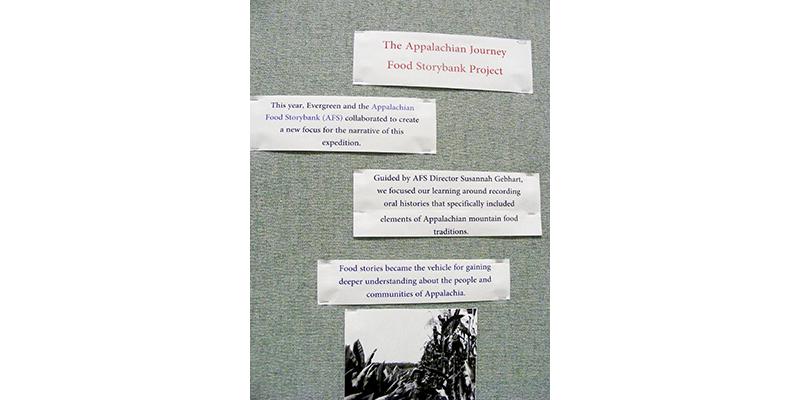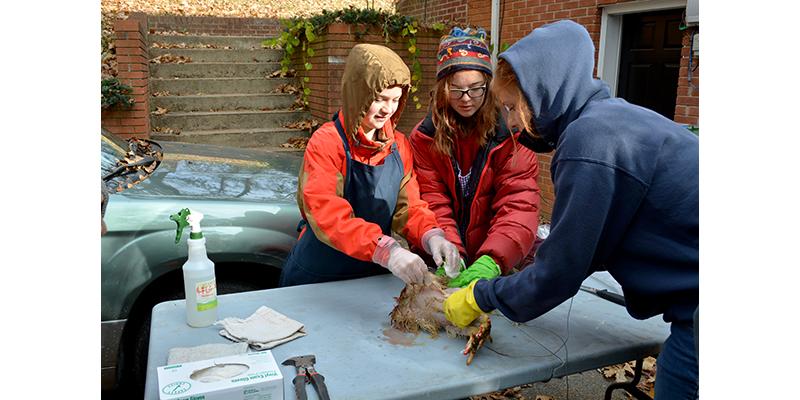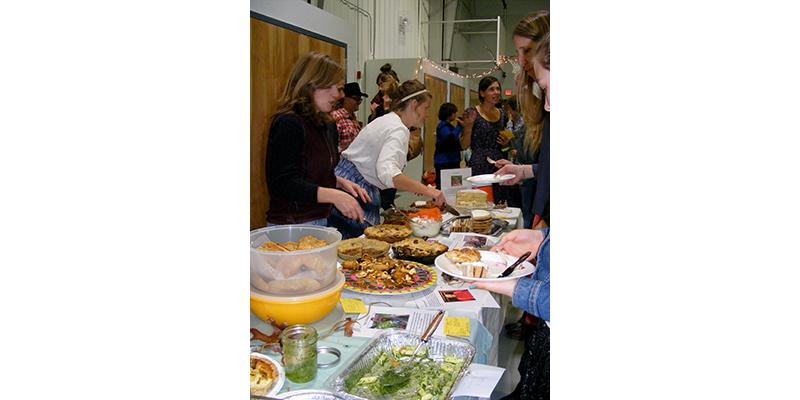The Appalachian Journey Storybank Project
School: Evergreen Community Charter School
City/State: Asheville, NC
Grade(s): 8
Format(s): Interview(s)
Subject(s): English Language Arts, Science and Technology, Social Studies
Project Overview
Eighth grade students at Evergreen Community Charter School in Asheville, North Carolina participated in an expedition called The Appalachian Journey where students investigated the history of southern Appalachia to describe, as historians do, the relationship between the Scotch Irish settlers of the post-Civil War/early 20th century period and their rich and rugged mountain landscape. The guiding questions included: “What does it mean to be Appalachian and how has it changed over time?” “How are our values reflected in our culture and our relationship to the land?” “How do we use knowledge to make change?”
In science students located the cultural history of southern Appalachia within a case study of geologic and biological changes in Appalachia. They focused on how the residents of their own town rely on and impact the French Broad watershed. Students investigated land use practices historically and today, then wrote and presented their own arguments for the development or preservation of a controversial public land parcel in the region.
In history and language arts, students began with deep reading. Students viewed the PBS documentary, The Appalachians and read news perspectives on people and place, including essays and fiction by regional authors (Wendell Berry, Rick Bragg, Ron Rash) and contemporary newspaper articles on the impacts of coal, logging, mining, and road building in rural areas. In social studies, they read historical writings: Howard Zinn’s The People’s History of the United States and Ronald Eller’s Miners, Millhands, and Mountaineers. Students identified the key relationships between info-bites from their reading and viewing and represented those connections in a visual mind-map.
Having built and presented their considerable background knowledge through the mind-map, students interviewed local people whose roots in Appalachia grow deep. In partnership with the Appalachian Food Story Bank, they compile an oral history that includes how culture is communicated through preparing and serving food. Among the stories these Appalachians tell are how to slaughter a chicken, how to forest for wild greens, and how to preserve mountain olives. The individual’s story and recipes are archived at the North Carolina Department of Cultural Resources.
Finally, students shared their writing and foods made from the recipes. To do so, students slaughtered a chicken, made apple butter, pickled beets from the school garden, and baked sweet stack cakes. They served it to those they interviewed and their families at an old-fashioned Appalachian shindig, complete with contra dancing led by a professional caller and live old-time music. Students’ interactive simulation of cultural characteristics including language, values, and food demonstrates their deep understanding of people and place.
How This Project Can Be Useful
- Models the beginning-to-end process for an expedition
- Includes rubric and other supporting material
- Excellent example of student involvement with local community
- Exemplary model for meaningful multi-disciplinary project
Relevant Resources
Common Core State Standards
| Standard | Long Term Learning Target |
|---|---|
| RI.8.3 |
|
| W.8.2 |
|
| W.8.7 |
|
| W.8.8 |
|
| SL.8.1 |
|
| L.8.1 |
|
| L.8.2 |
|
| W.8.4 |
|
Additional Standards
- RLST Craft and Structure 5.8: Describe how a text presents information (e.g. sequentially, comparatively, causally)
- RLST Integration of Knowledge and Ideas 7.8: Integrate visual information with other information in print and digital texts







